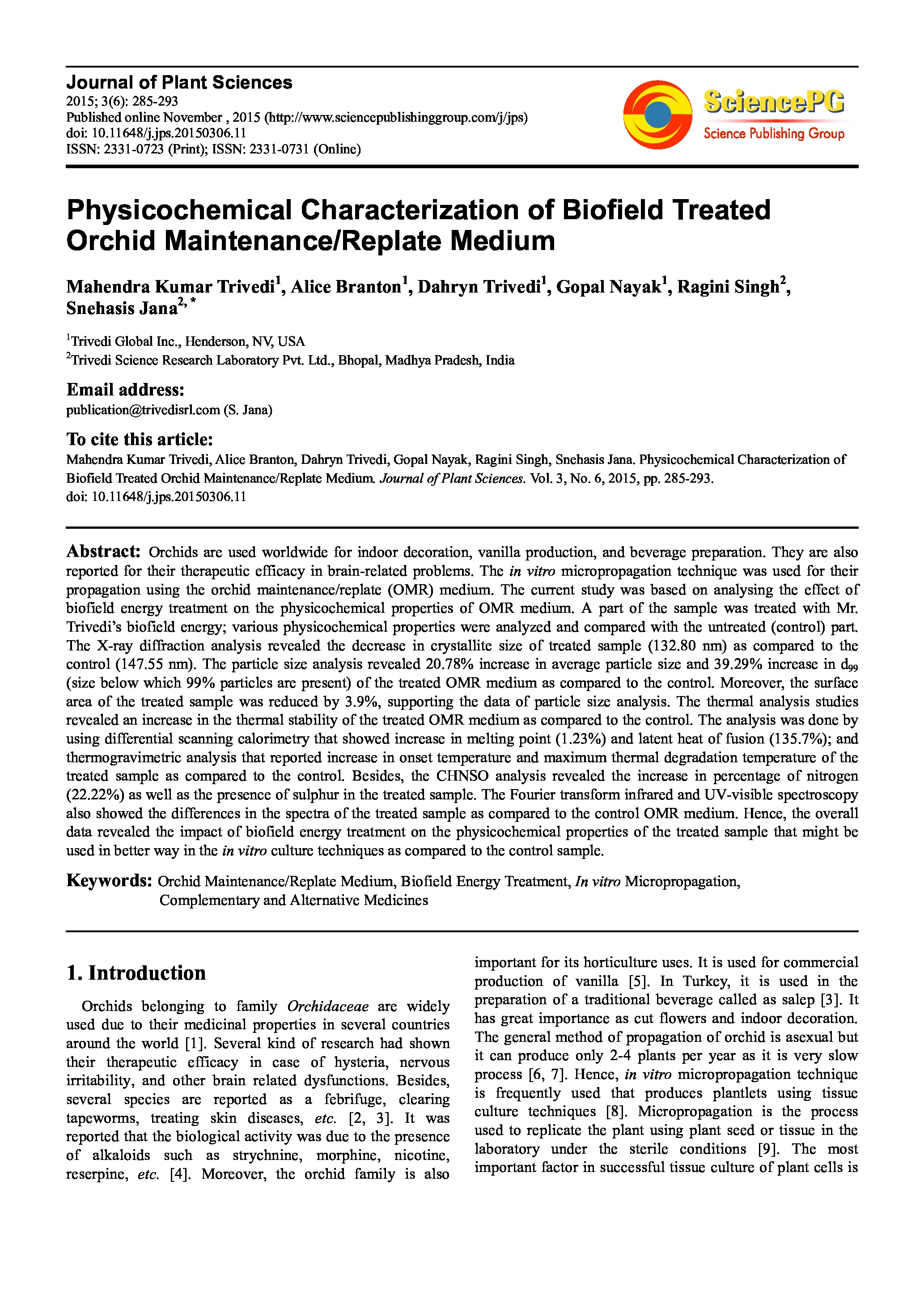Physicochemical Characterization of Biofield Treated Orchid Maintenance/Replate Medium
Affiliation
Trivedi Global Inc.; Trivedi Science Research Laboratory Pvt. Ltd.
Main category
Natural Sciences (Biology)
Abstract
Orchids are used worldwide for indoor decoration, vanilla production, and beverage preparation. They are also reported for their therapeutic efficacy in brain-related problems. The in vitro micropropagation technique was used for their propagation using the orchid maintenance/replate (OMR) medium. The current study was based on analysing the effect of biofield energy treatment on the physicochemical properties of OMR medium. A part of the sample was treated with Mr. Trivedi’s biofield energy; various physicochemical properties were analyzed and compared with the untreated (control) part. The X-ray diffraction analysis revealed the decrease in crystallite size of treated sample (132.80 nm) as compared to the control (147.55 nm). The particle size analysis revealed 20.78% increase in average particle size and 39.29% increase in d99 (size below which 99% particles are present) of the treated OMR medium as compared to the control. Moreover, the surface area of the treated sample was reduced by 3.9%, supporting the data of particle size analysis. The thermal analysis studies revealed an increase in the thermal stability of the treated OMR medium as compared to the control. The analysis was done by using differential scanning calorimetry that showed increase in melting point (1.23%) and latent heat of fusion (135.7%); and thermogravimetric analysis that reported increase in onset temperature and maximum thermal degradation temperature of the treated sample as compared to the control. Besides, the CHNSO analysis revealed the increase in percentage of nitrogen (22.22%) as well as the presence of sulphur in the treated sample. The Fourier transform infrared and UV-visible spectroscopy also showed the differences in the spectra of the treated sample as compared to the control OMR medium. Hence, the overall data revealed the impact of biofield energy treatment on the physicochemical properties of the treated sample that might be used in better way in the in vitro culture techniques as compared to the control sample.
DOI
10.18147/smn.2017/paper:423
Do you have problems viewing the pdf-file? Download paper
here
If the paper contains inappropriate content, please
report the paper. You will be redirected to the landing page.
